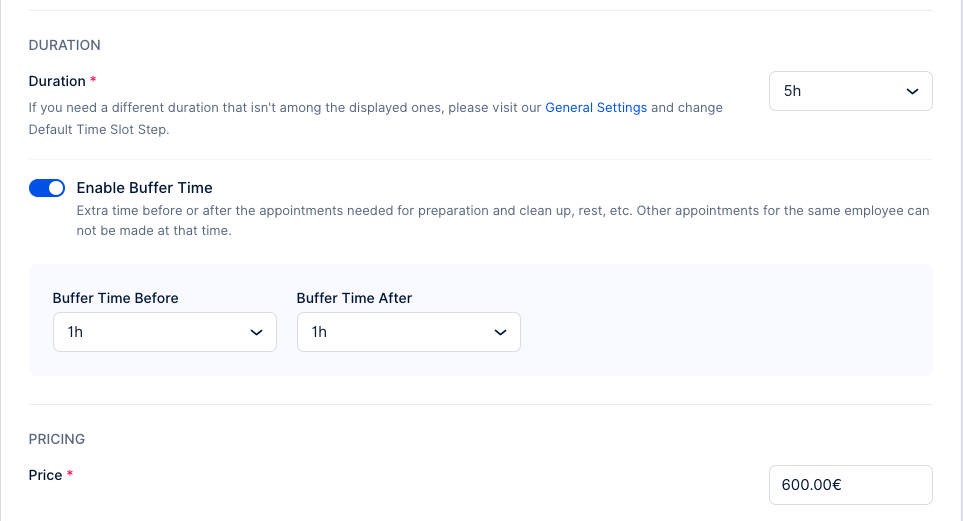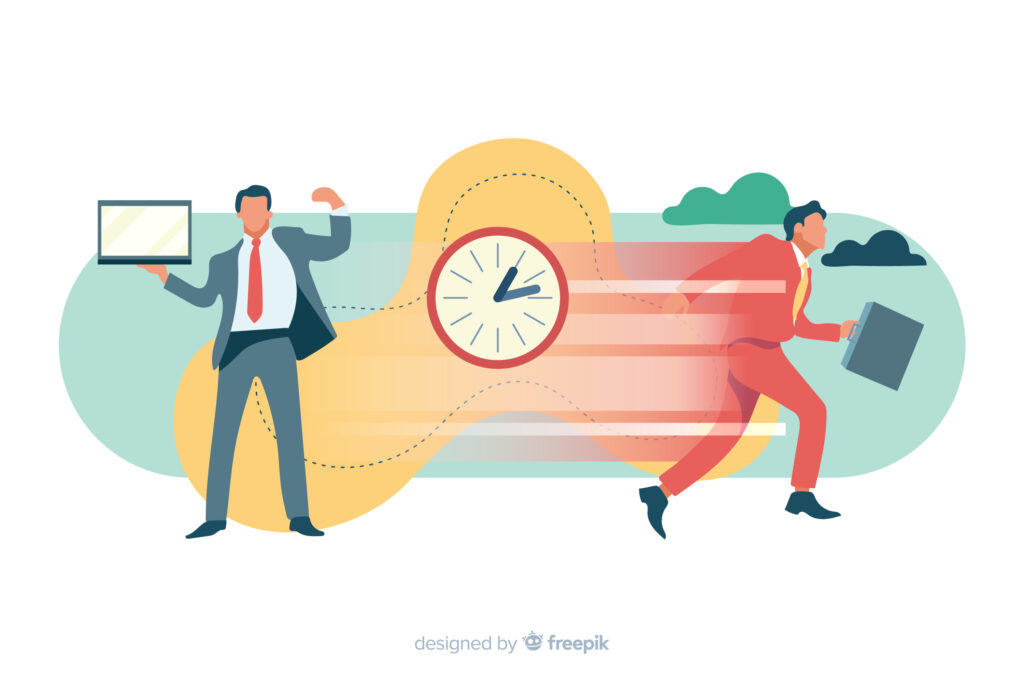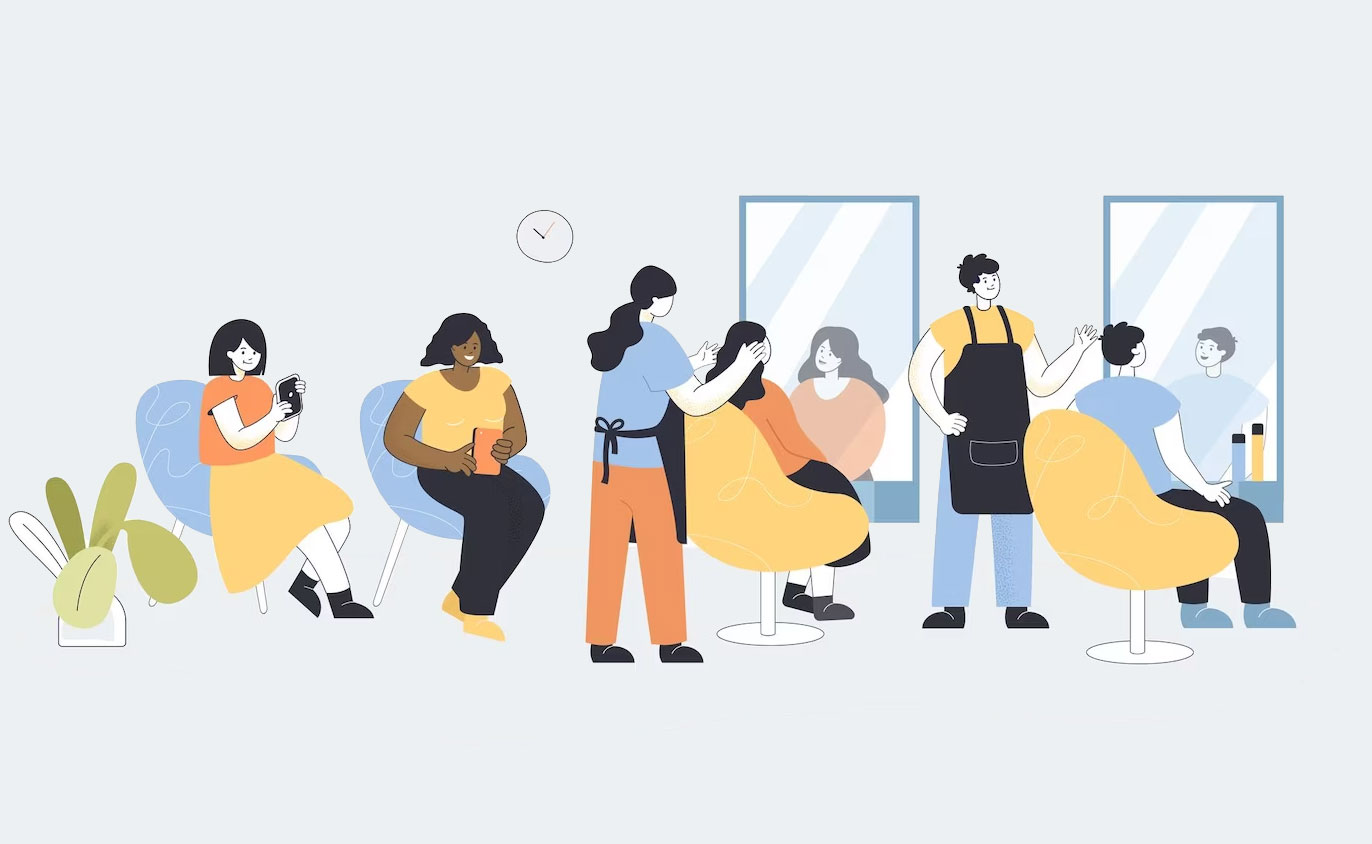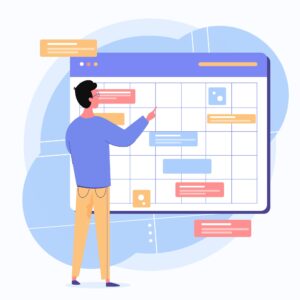For businesses and professionals offering appointments and services, finding a sweet spot between productivity and a healthy life-work balance is becoming more challenging.
Naturally, you want to earn as much revenue in the shortest period of time as possible. But in the long run, swamping yourself with work will do more harm than good to your revenue.
Appointment buffer time is here to help you find that sweet spot and maximize your revenue potential, while still having enough free time to unwind between appointments.
Sounds good? Let’s learn the exact strategies you need to implement to get the most out of your time and still run a profitable business.
What is Appointment Buffer Time?
Appointment buffer time represents deliberate intervals between consecutive appointments or tasks. Its purpose is to create a breathing space and unwind before and after appointments in order to be able to provide high-quality service each and every time. As a service provider, you can use this buffer time to regroup, prepare, and address any unforeseen circumstances that may arise during appointments.
Appointment buffer time will help you avoid a tightly packed schedule, which leads to stress, rushed interactions with clients, and lower-quality service. Strategically implementing buffer time between appointments will help you be more efficient, provide better services to all clients, and optimize business operations.
How to Use Appointment Buffer Time to Maximize Productivity?
There are two things appointment buffer time can help you with: maximizing productivity and maximizing revenue, without jeopardizing your free time. Let’s first see how you can maximize productivity by implementing buffer time:
- Regain focus and unwind
No matter in which industry your business operates, consecutive appointments can be mentally, emotionally, and even physically draining. Use appointment buffer time to take a break, stretch, or engage in relaxation techniques. It will help you energize and regain focus so you can take the next appointment with a clear mind. E.g. breathing exercises can help you reduce stress and feel better in a short period of time.
- Reflect on the previous appointment
You can also use a portion of buffer time to reflect on the previous appointment and see what went well, identify areas for improvement and take notes if it’s a recurring appointment. It will help you to provide even higher quality services and perform better, enhancing customer satisfaction.
- Prepare for the next appointment
You don’t want to come off unprepared to your next client. It’s crucial that you use part of your buffer time to familiarize yourself with the client’s information, history, or requirements. This is especially important if you want to personalize your approach. Being well-prepared leads to meaningful interactions and builds trust with your clients.
- Handle issues if they arise
No appointment is the same. Even if you meticulously plan your schedule, unexpected delays or issues are quite possible. When you have appointment buffer time, it allows you to address these situations without stress and disrupting your entire schedule. It serves as a safety net to resolve issues, without any inconvenience for clients, employees, and you. Another important thing is using a color code calendar, which helps in visualizing and managing your appointments effectively.
Tips to Maximize Revenue with Buffer Time
Aside from ensuring you’re always on peak performance, appointment buffer time can also help you maximize your revenue. You can use it to offer extra services that complement the primary service you provide for a specific client. E.g. a hair salon could offer haircuts as extras to hair coloring, ensuring extra revenue. Besides services, you can also sell products that can help clients with their needs. In the case of hair salons, that could be styling products, shampoos, and hair treatment products.
You can also utilize appointment buffer time to step up your social media game, engage with potential customers, and eventually attract new ones to book appointments in your business. When appropriate, analyze your current customers, and their preferences and use buffer time to identify opportunities for upselling and cross-selling.
How to Set Up Appointment Buffer Time? Step-by-step Guide
Let’s see how you can set up buffer time step-by-step and implement it to ensure maximum efficiency.
- Start by evaluating your and your employees’ current schedules to see busy and idle periods. The goal of this step is to identify potential bottlenecks and see how buffer time can help with that. How long does your typical appointment last? What’s the average preparation time for each appointment?
- Now that you’ve gathered crucial information, it’s time to find the perfect appointment buffer time duration. This hugely depends on the nature of your business, industry, and the services you provide. Don’t forget, however, to take your personal preferences into consideration. In some cases, 5-15 minutes of appointment buffer time is enough. But for some industries, it can go up to 30 minutes.
- You have to make sure clients don’t take advantage of buffer time between appointments when they see no one waiting in line. This step is optional, but if clients overstep their time slot, it’s crucial to inform them about buffer time and its benefits. Communicate clearly why punctuality is important and it will help you manage clients’ expectations efficiently.
- Now it’s time to set up buffer time in your appointment booking app. This ensures that customers can’t book appointments during this period to avoid any scheduling conflicts and additional stress.
Finding the perfect appointment buffer time duration
Finding the perfect appointment buffer time duration is crucial to maximize your productivity and revenue. To achieve that, you have to analyze service requirements and also consider client needs. Some clients may prefer shorter, more focused appointments, while others value personalized approaches and longer sessions. Ask them directly about their preferences and customize your buffer time accordingly.
Another important step is to assess appointment frequency with each client. Therapy sessions, for example, require regular visits and usually have a strict duration. On the other hand, a simple haircut takes less time and doesn’t happen at regular intervals. If you spend time traveling for appointments, you also have to factor in travel time. Buffer time is still considered your work, so adjusting your prices accordingly will also help you maximize revenue.
After you’ve taken all these factors into consideration, determine your appointment buffer time duration which should be anything between 5 and 30 minutes to ensure maximum productivity.
Use a Free Appointment Booking App
The best appointment booking systems offer you insights about your appointments you can use to track appointment durations and identify patterns. And one such system that provides you with the clarity you need is Trafft.
Trafft comes with a set of features and scheduling hacks that help you make data-driven decisions when it comes to appointment buffer time. Besides important insights, it also allows you to take full control of your appointment buffer time, determine the custom duration, add extras, and do all of this for each service you provide. Remember that there isn’t a one-size-fits-all solution for buffer time, and if you feel you need an hour before the next appointment, you can set it up with Trafft. Buffer time doesn’t appear in your calendar separately, and it just adds up to the duration of your services. E.g. if you provide services for 30 minutes and need 10 minutes to unwind, clients can’t book appointments in that time frame.

With Trafft, you can add buffer time before and after appointments. So if your office hours are from 9 to 5 and you need half an hour before the appointment to prepare, it’s possible with Trafft. Even though your office hours are from 9 to 5, clients won’t be able to book a specific appointment before 9:30.
Sounds good? Claim back your time and sign up for Trafft now - it’s free for up to 5 members!



![Top 17 HoneyBook Alternatives [Free & Paid] in 2025](https://trafft.com/wp-content/uploads/2021/10/honey2.jpg)


